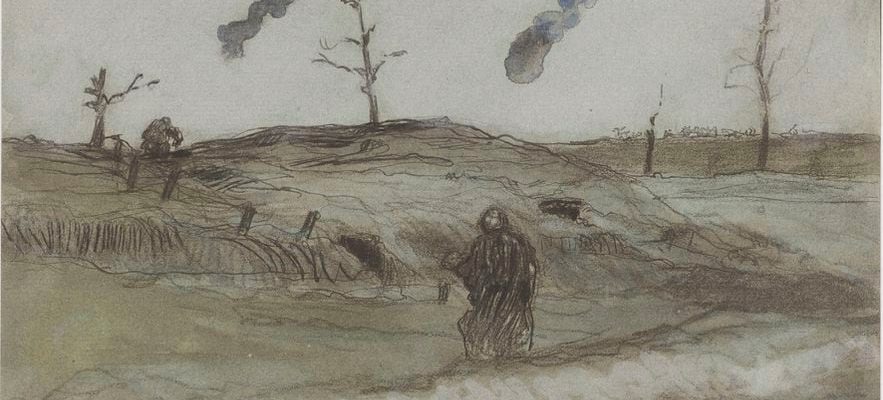There is The Art of Being a Grandfathercelebrated by Victor Hugo in the eponymous collection published in 1877. And there is now The Art of Being a Grandson, title of an exhibition at the Maison de Victor Hugo, in Paris, which devotes a first major monograph to Georges Hugo (1868-1925), the only grandson of the writer. A nice spotlight on the man who was the first painter in a family lineage that continues today. And the opportunity to (re)discover a little-known work, to explore the links maintained by the artist with his illustrious ancestor. Orchestrated by Gérard Audinet, director of the Maisons de Victor Hugo Paris-Guernsey, and Alexandrine Achille, in charge of the photographic collection of the premises, it is a moving retrospective, rich in 300 pieces – drawings, paintings, photographs, manuscripts, notebooks, letters -, some of which come from unpublished archives.
Funny character, this “Petiphysse” – as he was called. Cherished by Victor Hugo, alias “Papapa”, “little Georges”, fatherless at 3 years old, draws very early. From Guernsey, where he spent enchanting hours with his grandfather, he would make “an ideal”. It was there that he took his first painting lessons, watercoloring the family home of Hauteville House, sketching the island and its inhabitants at the royal court or at the pub. Above all, it is his drawings, in pencil, ink or watercolor, which are striking with their sharp lines and the insatiable curiosity of a compulsive scribbler for his contemporaries.
Georges Hugo, “The battlefield of Navarin”, 1914-1918.
/ © Maisons de Victor Hugo Paris-Guernsey / Paris Musées
The character, this insight teaches us, is not devoid of paradoxes. Georges likes to frequent bistros, theaters, but also the personalities – politicians and men of letters – of his time whom he immortalizes with a sarcastic line, while nourishing a sincere empathy for the most modest: the scion of a good family thus chose to do his military service as a simple sailor and, years later, in fragile health, insisted on joining the front in 1914, at almost 50 years old. He is said to be an amiable dilettante, both shy and a gambler, discreet and charming, a passionate but unstable lover. His unions with Pauline then Dora, from whom three children were born, were tumultuous. His fortune squandered, he ends his days in destitution, carrying his notebooks to the Champs-Elysées, between the Café des Gaufres and the room he rents in a gambling club, where prostitutes provide him with company.
“The only anchor points in his life were undoubtedly his love of art and his loyalty to Victor Hugo”, underlines Gérard Audinet, who points out the dilemma, omnipresent in the one who “seems torn between his veneration for Victor Hugo and his artistic vocation by which he fears tarnishing the memory of the poet”. Georges was 16 years old when, on June 1, 1885, he led Victor’s procession to the Pantheon. From then on, he became guardian of the temple, dedicating a work to it, My grandfather (1902), defending tooth and nail the author of Miserable during posthumous controversies, striving to transform Hauteville House into a museum and contributing through successive donations to the creation of its Parisian counterpart, Place des Vosges.
His abundant artistic production was only revealed to the public after the Great War, when, in 1920, the Museum of Decorative Arts exhibited his paintings, mainly landscapes, and his societal sketches, precious testimonies of the daily life of the poilus or Proustian chronicles of his time. Little by little falling back into oblivion, he remains, as the critic Raymond Schwab wrote, one of those “for whom their art is only a means of multiplying the taste they have for the spectacle of the world “.
